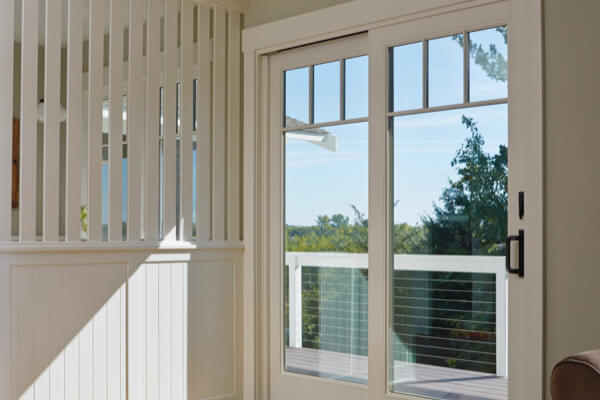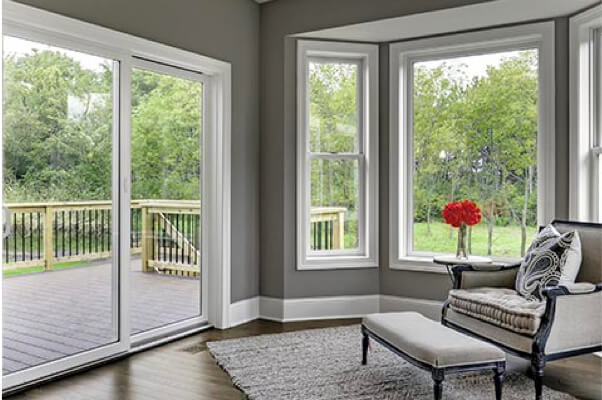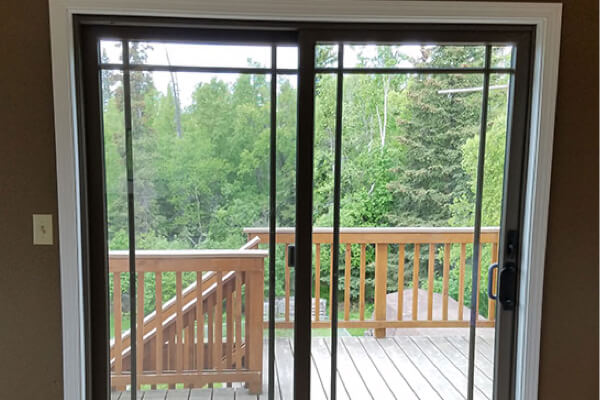Every year, we get many questions about indoor humidity and window condensation and the effects on windows. Here, you’ll find our answers to the most common questions as well as information on the positive and negative effects of humidity.

What effect does indoor humidity have on window condensation?
Condensation is caused by excess humidity. When the outside temperature cools, the temperature of the glass in your windows does as well. When warm, moist indoor air comes in contact with this cold glass, the moisture condenses and forms water droplets. To prevent condensation from forming on windows, you have to consider the window’s energy efficiency, inside and outside temperatures, but most importantly, the humidity inside your home. Indoor moisture is just a part of life. Many activities such as cooking and bathing release moisture into the air.
How can I cut down indoor humidity during winter?
- Open the blinds and drapes to let out moisture-laden air.
- Raise the air temperature in your home to decrease relative humidity.
- Turn on ceiling fans for more air circulation.
- Run exhaust fans in the kitchen and bathroom and leaving them running for 15 minutes or longer to clear out lingering moisture.
- Ensure proper ventilation of appliances, like dryers, to the outside.
- Avoid storing firewood in your house or basement.
What about the opposite problem? In winter, indoor heating makes the air too dry. Are humidifiers OK to use?
While some people may find humidified air easier to breathe, it’s important to clean your humidifier regularly so that mold and bacteria don’t build up in its filters. Also, if the air is humidified excessively, condensation and other excess humidity related problems can occur.
On the positive side, humidified air can reduce the shrinkage of wall cracks and wooden furniture caused by over-drying as well as reducing static electricity. Whether or not you choose to use a humidifier, you must weigh the advantages of humidity against its disadvantages, including the increased risk of condensation.
Every home is different, but a level between 30 and 40 per cent humidity is typically ideal for keeping your home warm and comfortable in the winter, without leaving condensation on the windows.
Failure to maintain a reasonable humidity level may have the following effects:
- Low humidity=skin dryness. Humidity levels below 20% may cause skin dryness, which results in itchiness and discomfort.
- High humidity=allergies. Humidity levels of over 65% may cause asthma, allergies, and other upper respiratory illnesses.
- Excess humidity=home deterioration. Components such as windows, tiles, wood, and doors that store moisture are affected most.
When windows are not properly sealed, air leakage and condensation can occur when the indoor temperature is different from the outdoor temperature. Moisture can also seep through walls and deteriorate the paint there as well as on window sashes. And if there’s too much moisture in the window frame, it could cause rotting.
The bottom line: maintain a relative humidity level that’s comfortable for you, then reduce the humidity level when condensation occurs. The best way to do this is by turning off your humidifier or reducing the above sources of humidity in your home.
For more information on condensation, check out our other blog post: Condensation Season is Starting, or view our free condensation brochure: 2021 Condensation Brochure – Renewal by Andersen.
If you feel like your old windows need to be replaced, consider a winter window replacement project! We offer quick installation and you can still experience savings from the increased energy efficiency found in new replacement windows. Call us to schedule a free consultation today!










